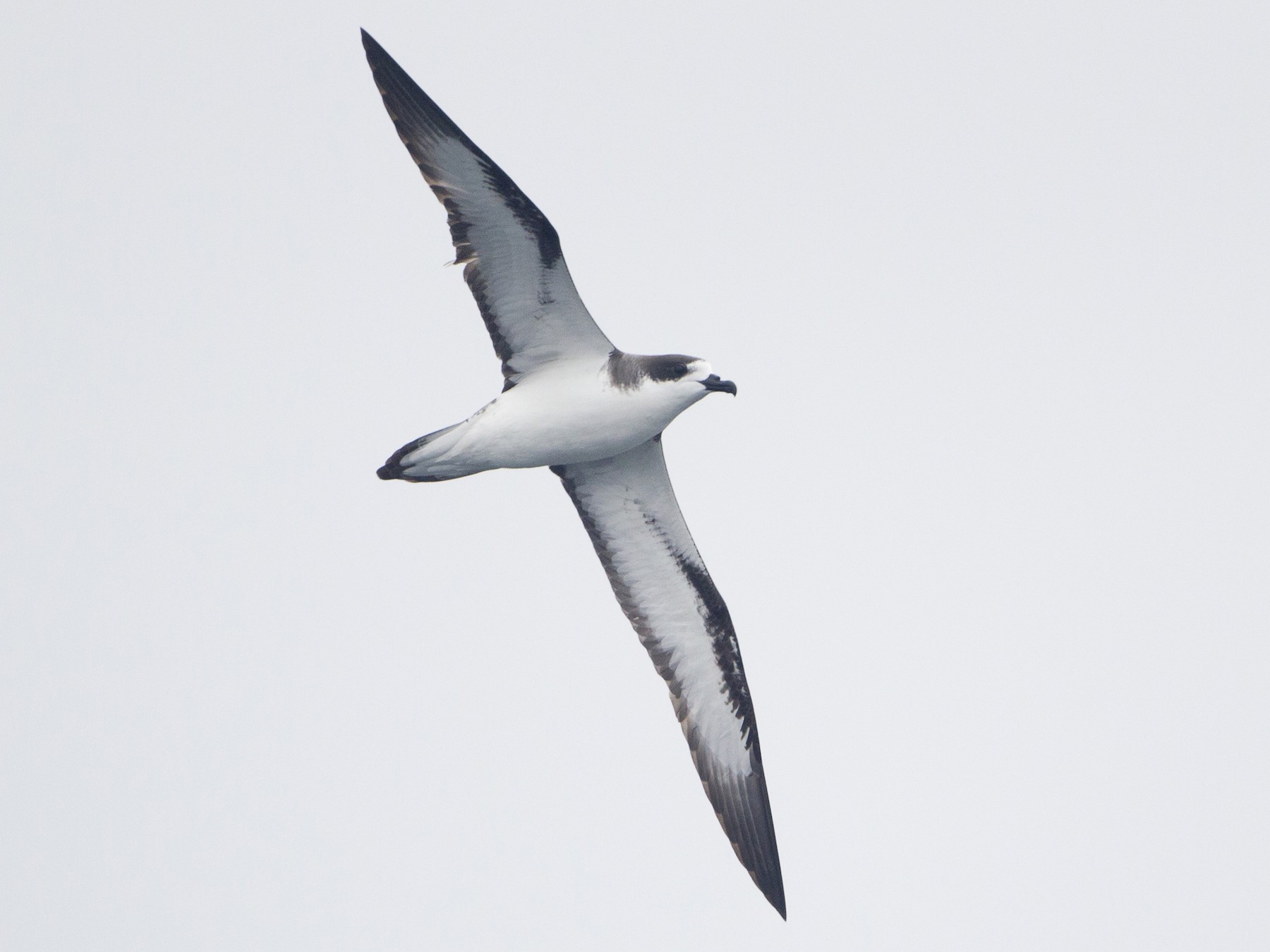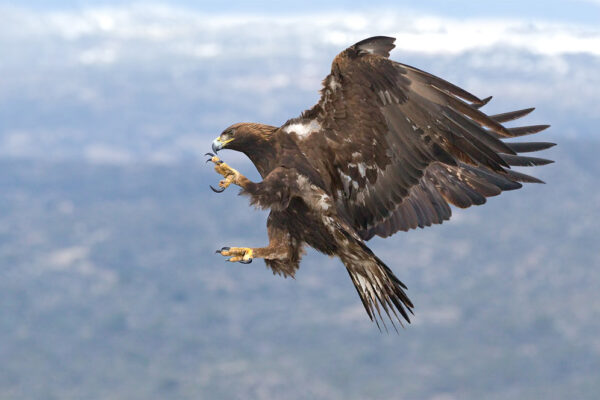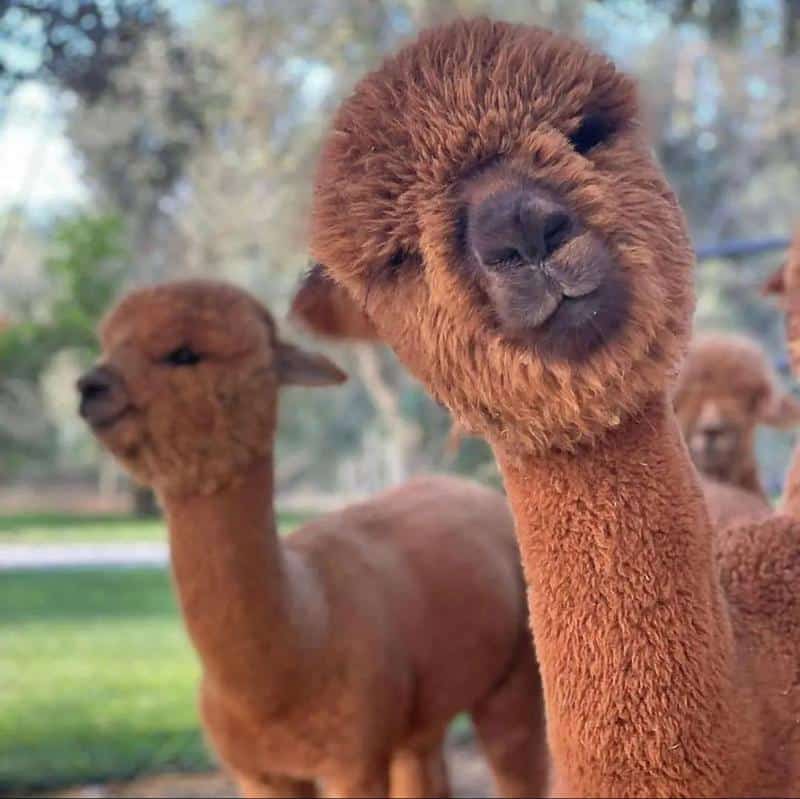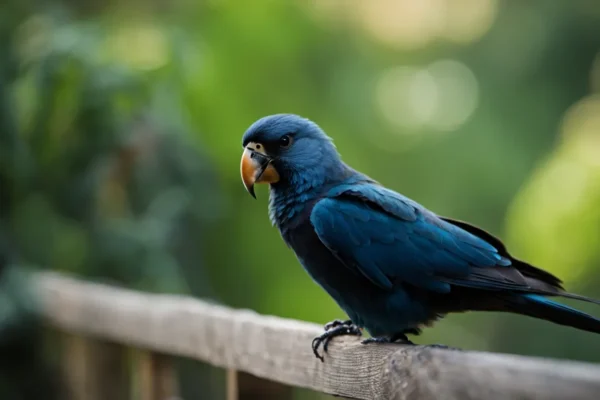Welcome to the world of birds on Oahu, a beautiful island in Hawaii! This blog post is your ticket to discovering the different kinds of birds that live here. Some birds have been here for a long time, while others came from far away. We’ll talk about birds that are from here, like the Hawaiian honeycreeper and the nene. We’ll also learn about birds that were brought here, like the Hawaiian Stilt, Japanese white-eye, and Hawaiian Duck. These birds can be found all around the island – in forests and even on the beaches. Let’s dive in and explore the amazing bird life of Oahu together!
List of Beautiful Birds of Oahu
Red-crested Cardinal

Image Source
- Scientific name: Paroaria coronata
- Lifespan: Up to 10 years
- Size: Approximately 17-20 centimeters (6.7-7.9 inches)
- Origin: South America (native to Argentina, Bolivia, Brazil, and Paraguay)
The Red-crested Cardinal, an introduced species to Oahu, is a beautiful and popular bird native to North America.
These stunning birds in Hawaii can be easily identified by their red head, white underparts, grayish back, and black-tipped wings and tail. As a member of the songbird family, the red-crested cardinal has a distinctive call that adds to its charm.
Red-crested cardinals primarily inhabit areas close to lakes, marshes, and rivers. They were introduced to Oahu in 1930 and are known for their gregarious nature, often forming large flocks. Fearless around humans, these birds may approach people in search of food.
Hawaiian Duck (Koloa maoli):

- Scientific name: Anas wyvilliana
- Lifespan: Typically 3-5 years
- Size: Medium-sized duck; around 16-18 inches (41-46 cm) in length
- Origin: Endemic to the Hawaiian Islands
The Hawaiian Duck, or koloa maoli, is an endemic duck species found solely in the Hawaiian Islands.
Male koloa maoli measure about 19 inches in length, while females are around 15 inches. Adult males are slightly larger than females and have mottled brown plumage with green-blue speculum feathers.
These Oahu birds are among the most endangered waterfowl in the United States. Shy and secretive, koloa maoli are rarely seen in open areas, preferring to stay concealed in dense vegetation near ponds and streams. They are recognized for their soft quacks and calls and feed on insect larvae, snails, grass seeds, and green algae.
Hawaiian Stilt (Ae’O)

- Scientific name: Himantopus mexicanus knudseni
- Lifespan: About 3-5 years
- Size: Medium-sized wading bird; approximately 13-15 inches (33-38 cm) in length
- Origin: Endemic to the Hawaiian Islands
The Hawaiian Stilt, also known as Ae’O, is an endemic and elegant wading bird species found exclusively on Oahu. Scientifically referred to as Himantopus mexicanus knudseni, these birds boast distinct features that set them apart.
Easily distinguishable, Hawaiian Stilts exhibit a black and white plumage, complemented by a long, slender black bill. Notably, they possess a white face and a striking white spot above their eyes. Their most prominent physical attribute is their extremely long, pink, and slender legs. On average, these birds measure around 16 inches in length and weigh between 4 to 5 ounces.
The Hawaiian Stilt’s diet predominantly consists of invertebrates, such as insects, crustaceans, and mollusks. They also supplement their diet with small fish, frogs, and lizards. These birds are highly versatile foragers, adept at hunting for food in both fresh and saltwater habitats.
Breeding season for the Hawaiian Stilt spans from March to August. During this time, the female constructs a nest using vegetation near water sources.
Fulvous Whistling-Duck

- Scientific name: Dendrocygna bicolor
- Lifespan: Typically 5-7 years
- Size: Medium-sized duck; around 17-21 inches (43-53 cm) in length
- Origin: Native to the Americas, including parts of North and Central America.
The Fulvous Whistling-Duck is a fascinating species of duck often observed in small groups. Their distinctive appearance and behavior make them stand out in the avian world.
These ducks can be easily identified by their striking brown-black back, brown belly, and orangish-brown head. Their bodies measure between 18 to 21 inches in length, with females being slightly less heavy. Fulvous Whistling-Ducks have wide webbed legs and a thick gray bill that adds to their unique features.
The Fulvous Whistling-Duck derives its name from the whistling call made by both males and females. They are proficient swimmers and divers, and their diet predominantly consists of aquatic plants and insects.
During the breeding season, pairs select a suitable site together and construct a platform nest, where females can lay up to 20 buffy white-colored eggs. The incubation period for these eggs lasts up to 3 weeks.
Hawaiian Coot

- Scientific name: Fulica alai
- Lifespan: Typically 3-5 years
- Size: Medium-sized waterbird; about 14-15 inches (36-38 cm) in length
- Origin: Endemic to the Hawaiian Islands, often found in freshwater wetlands.
The Hawaiian Coot, also known as the Alae Kea, is a native bird species found exclusively on the Hawaiian Island of Oahu. These birds are easily recognizable with their dark gray to black plumage, white bill, and red eyes. Adults usually measure around 13-16 inches in length.
Apart from their distinctive appearance, Hawaiian coots play a crucial role in the ecosystem of the Northwest Hawaiian Islands. They inhabit both fresh and saltwater habitats and help control insect and pest populations. However, being an essential part of the food chain, they also serve as prey for various predators.
Pacific Golden Plover

- Scientific name: Pluvialis fulva
- Lifespan: Typically 5-7 years
- Size: Medium-sized shorebird; around 8-11 inches (20-28 cm) in length
- Origin: Found in the Arctic tundra during breeding season and migrates to coastal areas of the Pacific Islands during the non-breeding season.
The Pacific Golden Plover is a small shorebird that spends its winters on Oahu. Birdwatchers often seek this species due to its popularity and presence in the region. These birds are approximately nine inches long with a wingspan of around 24 inches.
The Pacific Golden Plover exhibits distinct features, including golden-brown back and wings, grayish belly for non-breeding birds, and black belly for breeding birds. A notable white stripe extends from its head to the sides, and it has long dark legs.
Their diet primarily consists of insects, larvae, and small invertebrates, and they use their long bill to probe the sand for food. They nest on the ground near water, constructing cup-shaped nests made of grass and leaves. Interestingly, these birds gain weight while on Oahu, preparing for their breeding season in the arctic.
Zebra Dove

- Scientific name: Geopelia striata
- Lifespan: Typically 3-5 years
- Size: Small dove; around 7-8 inches (18-20 cm) in length
- Origin: Native to Southeast Asia and parts of the Pacific Islands, often found in open habitats.
The Zebra Dove, introduced to all the Hawaiian islands in the early 1900s, is a common bird species often found in open country, parks, and gardens on Oahu. This small, striped member of the pigeon family features a grayish-brown plumage with white and black barring, complemented by a long tail measuring about 9.4 inches.
Zebra doves are usually seen in pairs or small flocks, and their diet consists mainly of weed seeds and grass. During the breeding season, which spans from September to June, males engage in an elaborate mating dance to attract females. With their camouflaging plumage, they blend seamlessly into their surroundings when on the ground.
Rose-Ringed Parakeet

- Scientific name: Psittacula krameri
- Lifespan: 25 to 30 years
- Size: 16 inches
- Native to: Africa and South Asia
The Rose-ringed Parakeet, also known as the Ring-necked Parakeet, is not a native species to Hawaii. It was introduced to the islands as pets in the 1960s. Some of these parakeets were accidentally released into the wild during Hurricane Iwa, leading to their establishment as an invasive species.
The Rose-ringed Parakeet is a medium-sized parrot with a distinctive green body and a long tail. Male parakeets have a black neck ring, while females and immature birds lack this feature. They are popular as pets due to their playful nature and ability to mimic human speech.
These social birds live in flocks of up to 30 individuals and typically nest in tree cavities, laying 4-6 eggs per clutch. Their diet includes fruits, seeds, nuts, and flowers. Unfortunately, in Oahu, they have become pests due to their habit of damaging crops.
Hawaiian Hawk

- Scientific name: Buteo solitarius
- Lifespan: Typically 10-20 years
- Size: Medium-sized hawk; around 16-18 inches (41-46 cm) in length, wingspan of 3.5-4.3 feet (107-131 cm)
- Origin: Endemic to the Hawaiian Islands
The Hawaiian Hawk, known as ‘io, is a unique and endemic bird species found across various Hawaiian Islands. Identifying these hawks is relatively straightforward:
Belonging to the Buteo genus, which also includes the red-tailed hawk and red-shouldered hawk, the Hawaiian hawk is a medium-sized bird of prey, measuring 16-18 inches in body length and boasting a wingspan of 33-36 inches. Their plumage is typically brownish-gray, with lighter underparts and a whitish throat.
Hawaiian hawks thrive in wet forests on all the main islands, except for Kaua’i. Their diet mainly consists of rodents and lizards, but they are versatile hunters, capable of catching birds, snakes, and insects as well. Breeding season for these hawks occurs from March to September, and females lay 1-3 eggs per clutch.
Hawaiian Petrel

- Scientific name: Pterodroma sandwichensis
- Lifespan: Around 30-40 years
- Size: Medium-sized petrel; approximately 16-18 inches (41-46 cm) in length
- Origin: Native to the Hawaiian Islands, often nests in highland areas and forages at sea.
The Hawaiian Petrel, known as ʻuaʻu, is a remarkable seabird that is native to and exclusive to the Hawaiian Islands. It is the sole member of the Pterodroma genus to breed in Hawaii.
These birds found on Oahu display a distinctive appearance, with their black upperparts and white underparts. They possess an impressive wingspan, spanning approximately three feet, and a notable white face.
The Hawaiian petrel’s diet primarily consists of small fish, squid, and crustaceans, which it catches while soaring over the ocean. Once abundant across the Hawaiian Islands, the population of this species has experienced a significant decline in recent years.
The main threats faced by the Hawaiian petrel are introduced predators, such as cats, which prey on the chicks and eggs. Additionally, habitat loss due to development and human activity poses a considerable risk to their survival. Furthermore, the presence of fishing nets and other marine debris contributes to their declining numbers.
Frigate birds

- Scientific name: Fregatidae
- Lifespan: 25-34 years
- Size: 36 inches
- Native to: tropical Atlantic
- Beaks typically measure 5-7 inches (12.7-18.8 cm) in length
The Great Frigatebird is a magnificent avian species known for its exceptional flying abilities and considerable wingspan, measuring up to an impressive 91 inches. These birds are highly adapted for a life spent soaring over the open oceans in pursuit of food.
Frigatebirds derive their name from their distinctively long and narrow wings, enabling them to cover vast distances with ease. In Oahu, Hawaii, these birds appear mostly black, featuring a striking red throat pouch during the breeding season. The males inflate this pouch to attract females, while the females have a white throat and an all-black body.
These fascinating creatures subsist mainly on a diet of fish and squid, which they capture by swooping down from above the water’s surface. Frigatebirds are renowned for their prolonged lifespans, often reaching up to 40 years. Their incredible aerial prowess and unique physical characteristics make them captivating subjects for further study and admiration.
Red-Whiskered Bulbul

- Scientific name: Pycnonotus jocosus
- Lifespan: 11 years
- Size: 17-23cm
- Native to: Southern Asia
The Red-whiskered Bulbul is a small passerine bird found throughout all the islands of Hawaii. Although introduced, these vibrant birds have adapted well to their new environment and can now be seen both in forested areas and urban settings.
With an average body length ranging from 7 to 8.5 inches, the adult Red-whiskered Bulbul possesses striking features. It exhibits a black head and upperparts, complemented by a white throat and belly. A noteworthy characteristic is the red face patches and undertail coverts, which add to its allure. Both males and females sport a crest similar to the red crested cardinal.
These birds have a diverse diet, consuming insects, berries, and small fruits. During the nesting season, they skillfully construct nests in trees or shrubs, where the female lays 2 to 4 eggs. These eggs are distinguishable by their pinkish hue with purple-red spots, adding a touch of beauty to their reproductive process. The Red-whiskered Bulbul’s successful establishment on the Hawaiian Islands showcases their adaptability and resilience as an introduced species.
Northern cardinals

Image Source
- Scientific name: Cardinalis cardinalis
- Life span: Up to 15 years
- Size: 21 cm (8.3 in)
- Weight: 33-65 g
- Origin: Eastern and Central North America
The Northern Cardinal is a widespread and well-known bird species, known for its vibrant red plumage and melodious song. From Western North America to the wet forests of Oahu, these cardinals can be commonly observed in backyards and various habitats.
Recognized as the state bird of seven states, the Northern Cardinal stands out with its distinctive red coloration, making it easily identifiable. These relatively small songbirds belong to the Cardinalidae family, along with grosbeaks and finches. Their bodies are predominantly red, with a striking black face and red beak. While males exhibit this classic red plumage, females have a brownish hue with a red crest and bill.
Northern Cardinals are versatile birds, thriving in woodlands, gardens, and backyards throughout Oahu. They are known for their monogamous behavior, often mating for life. During the breeding season, they build nests in trees or shrubs, and females lay 3-4 eggs per clutch. Incubation lasts for 12-13 days, and both parents actively participate in feeding the nestlings until they fledge at approximately 2 weeks old.
Scarlet honeycreeper

Image Source
- Scientific name: Iridophanes pulcherrimus
- Life span: Up to 6 years
- Size: 11 cm (4.3 in)
- Weight: 10 g
- Origin: South America
The Scarlet Honeycreeper, also known as I’iwi, is a stunning bird species found in both Kauai and the Big Island of Hawaii. Despite their declining numbers, these birds continue to captivate with their vibrant red plumage and long, elegant tails, making them one of the most visually striking avian species in Oahu.
Their appearance includes a long curved bill and black wings adorned with white patches, adding to their allure.
The long-curved bills of Scarlet Honeycreepers are well-adapted for feeding on nectar, arthropods, and fruits. Sadly, their population is now classified as endangered due to habitat loss and fragmentation. The decline in their numbers is a cause for concern, but with dedicated conservation efforts, there is hope to safeguard these beautiful birds from disappearing entirely from the islands.
Japanese White Eye

- Scientific name: Zosterops japonicus
- Lifespan: About 5-7 years
- Size: Small songbird; approximately 4-5 inches (10-13 cm) in length
- Origin: Native to eastern Asia, introduced to various parts of the world.
The Japanese White Eye, also known as the Warbling White-eye or Mountain White-eye, is not native to Hawaii. This small songbird was introduced to the islands in 1929. Despite being introduced, this bird has managed to establish itself and become a familiar sight in Oahu.
Japanese White Eyes are small birds with rounded bodies and short tails. Their plumage is mostly olive green on the upper parts and palish on the lower parts. The most distinctive feature is the white rings around their eyes, which gives them their name.
These social birds are often seen in flocks, and they have a diverse diet that includes insects, nectar, and fruits. They form monogamous pairs during the breeding season, and nest construction can take up to 10 days.
Laysan Albatross:

Image Source
- Scientific name: Phoebastria immutabilis
- Lifespan: 40-60 years
- Size: 76-91 centimeters (30-36 inches)
- Origin: Northwestern Hawaiian Islands
The Laysan Albatross is an iconic bird species in Hawaii, renowned for its impressive wingspan, long lifespan, and graceful flying abilities. However, these majestic birds are now facing a new threat: climate change.
Adult and immature Laysan Albatrosses have predominantly white plumage with dark gray upper wings and whitish underwings. The average length of adult birds is around 31-31.9 inches, and they feature a long, hooked bill.
With the Earth’s climate warming, the Laysan Albatross’s habitat is gradually eroding due to rising sea levels, and their food sources are becoming scarcer. This has had a devastating impact on the Laysan Albatross population, leading to a 30% decline in numbers over the last two decades.
These large birds are vital to Oahu’s ecosystem, and their decline serves as a clear warning of the severe consequences of climate change on our planet. Conservation efforts are crucial to protect these magnificent creatures and their habitats.
Red-billed Leiothrix

- Scientific name: Leiothrix lutea
- Lifespan: Typically 6-8 years
- Size: Small songbird; around 6-7 inches (15-18 cm) in length
- Origin: Native to Southeast Asia, introduced to other regions.
The Red-billed Leiothrix, measuring about 5 inches, graces Oahu with its stunning beauty. However, it is not native to the islands as it was introduced in the early 1900s.
Belonging to the Old World babbler family, this bird is also known as the Pekin Robin, Japanese Hill Robin, or Pekin Nightingale. The Red-billed Leiothrix displays an olive-green plumage, accentuated by an orange-yellow throat and breast. Its most striking features are the red bill and red-yellow tipped wings. Additionally, it boasts a long, forked tail, adding to its allure.
The Red-billed Leiothrix prefers habitats with dense undergrowth in forests or scrubs, often near running water. It constructs cup-shaped nests at least 10 feet above ground. Their diet primarily consists of fruits, with a preference for papayas and guavas. Unfortunately, avian malaria has been detected in their blood, posing a risk to their well-being.
Apapane

- Scientific name: Himatione sanguinea
- Lifespan: About 4-6 years
- Size: Small Hawaiian honeycreeper; approximately 5-5.5 inches (13-14 cm) in length
- Origin: Endemic to the Hawaiian Islands, often found in forests.
The Apapane, another red bird native to Oahu, is easily recognizable and a delight to observe.
With its long and curved beak perfectly adapted for sipping nectar from flowers, the Apapane is predominantly red, accompanied by a grayish belly and under the tail. These birds are also known for their melodious singing voices, often seen singing together in duets.
The Apapane plays a crucial role in Oahu’s ecosystem. By pollinating plants and regulating insect populations, they contribute significantly to the island’s natural balance. Furthermore, this small bird is a favorite food source for the endangered Hawaiian Hawk, underscoring its significance in the local food chain.
Oahu Alauahio

- Scientific name: Paroreomyza maculata
- Lifespan: Typically 4-6 years
- Size: Small Hawaiian honeycreeper; around 4-4.5 inches (10-11 cm) in length
- Origin: Endemic to the Hawaiian island of Oahu.
The Oahu Alauahio, also known as Oahu Creeper, is an endangered bird species belonging to the Hawaiian honeycreeper family. It is endemic to the island of Oahu and thrives in forested areas at elevations of 3,000 to 5,000 feet.
Measuring a mere 4 to 5 inches in length, the Alauahio exhibits greenish plumage on its upperparts and a yellow belly and breast. Interestingly, there are no apparent differences between males and females in appearance.
These birds have a diet that includes insects, which they catch by hawking them in flight or gleaning them from leaves and branches. The Alauahio also feeds on nectar from native Hawaiian flowers, such as lobeliads and ohia lehua blossoms, emphasizing their vital role in pollination and contributing to the ecosystem’s overall health.
Oahu Amakihi

- Scientific name: Chlorodrepanis flava
- Lifespan: About 5-7 years
- Size: Small Hawaiian honeycreeper; approximately 4-4.5 inches (10-11 cm) in length
- Origin: Endemic to the Hawaiian island of Oahu.
The Oahu Amakihi is a small green Hawaiian honeycreeper found exclusively on the island of Oahu.
Featuring a yellow breast and belly and a greenback, the Amakihi is a charming sight. They are adaptable to various habitats across the island.
Oahu Amakihi is essential for pollinating plants and also aids in controlling insect populations that could damage crops. Their unique ability to drink nectar from flowers without harming them makes them valuable contributors to the ecosystem. Unfortunately, their numbers have been declining due to habitat loss and disease, warranting conservation efforts to protect this small Hawaiian bird and preserve its habitat.
Final Thoughts on Birds of Oahu
As we wrap up our journey into the bird world of Oahu, we’ve uncovered a fascinating tapestry of feathered residents that call this Hawaiian paradise home. From native birds that have been here for a long time to introduced species that found their way here, Oahu’s avian community is diverse and vibrant.
The Hawaiian honeycreeper and the nene, with their unique stories, represent the island’s native birdlife. Meanwhile, the red-billed leiothrix, Japanese white-eye, and rose-ringed parakeet add a touch of exotic charm as introduced guests.
Whether you’re exploring the lush forests or strolling along the sandy shores, these birds have found their place in Oahu’s various habitats. Their presence brings an extra layer of beauty and vitality to the island’s natural surroundings.





